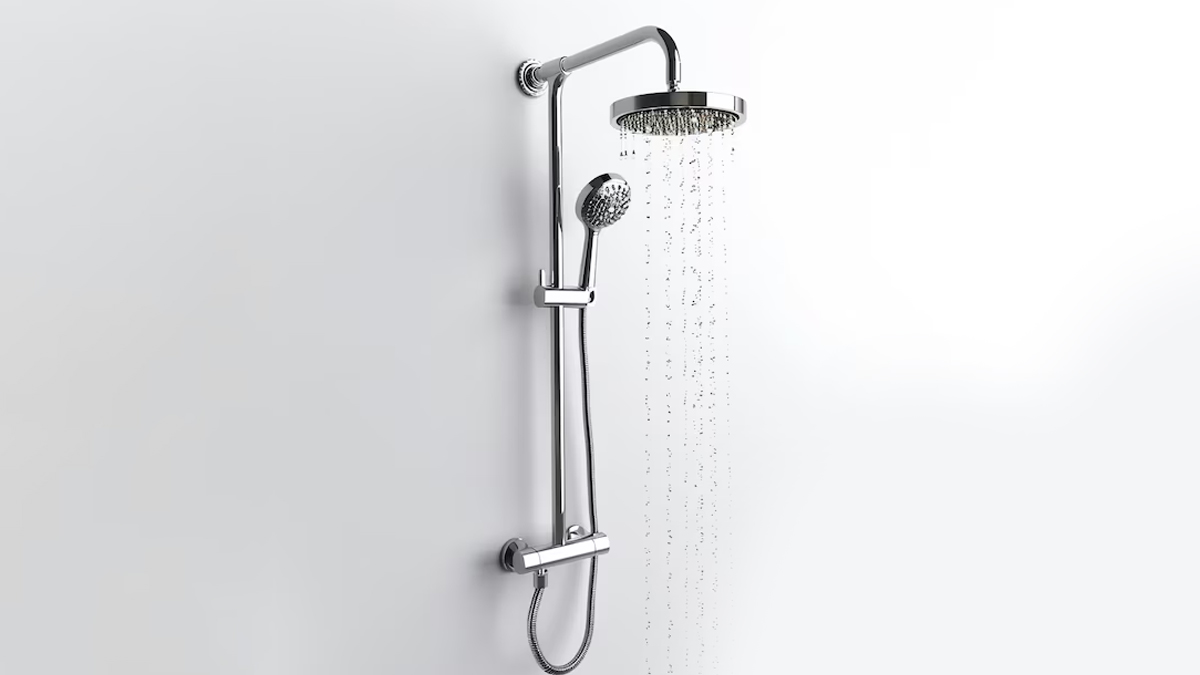Strokes are medical emergencies that occur when blood flow to the brain is interrupted, leading to brain cell damage. While strokes can happen anywhere, the risk of having a stroke in the bathroom is notably higher due to several unique factors associated with this environment. Understanding these risks and taking preventive measures can make a significant difference, especially for individuals with pre-existing health conditions.
To understand why the possibility of stroke is high in the bathroom, OnlyMyHealth team interacted with Dr Anand Saxena, Principal Director, Neurology, Max Super Speciality Hospital, Dwarka, Delhi.
Factors Contributing to Stroke Risks in the Bathroom
Stroke can be caused due to various factiors including blocked arteries (ischemic stroke), ruptured blood vessels (hemorrhagic stroke), and temporary blood flow interruption to the brain (transient ischemic attack or TIA). Here are some factors that can increase the risk of stroke in the bathroom.
Blood Pressure Fluctuations
One of the leading risk factors for a stroke in the bathroom is the rapid fluctuation in blood pressure. Explaining, Dr Saxena said, “Sudden exposure to hot water, such as during a bath or shower, can cause blood vessels to dilate. This dilation may lead to a sudden drop in blood pressure, which, in turn, can trigger fainting or a stroke. Conversely, for some individuals, the heat can cause blood pressure to spike, putting extra strain on the heart and blood vessels.” He warned, “For people with hypertension or cardiovascular conditions, this fluctuation can be dangerous.”
Straining During Bowel Movements
Straining is another major contributor to stroke risk in the bathroom. When people experience constipation or difficulty passing stools, they often strain, which according to Dr Saxena, dramatically raises blood pressure. “This spike can cause a hemorrhagic stroke, where a blood vessel in the brain bursts, or an ischemic stroke, where a clot blocks blood flow to the brain. Straining has also been associated with heart attacks, making it a significant health concern,” he noted.

Dehydration and Blood Thickening
Dehydration is a common problem that can increase stroke risk, especially in the bathroom environment. “People tend to become dehydrated more quickly in hot showers or baths, and dehydration thickens the blood, increasing the chances of a clot forming,” Dr Saxena said. Additionally, older adults, who are more susceptible to dehydration, often don’t drink enough fluids, exacerbating the problem.
Falls and Head Injuries
Bathrooms are often wet and slippery, creating a high risk of falls. “A slip in the shower or on a wet bathroom floor can lead to head trauma, which may trigger a stroke or cause stroke-like symptoms due to brain injury,” Dr Saxena said. Falls can also be dangerous for those already prone to strokes or other neurological conditions.
Also read: Can Cracking Your Neck Cause Stroke? Doctor Explains
Ways to Prevent Strokes in the Bathroom
While the risks in the bathroom are real, there are several preventive measures that can significantly reduce the chances of a stroke occurring in this environment.
Monitor Blood Pressure
Keeping blood pressure under control is one of the most important preventive steps. According to Dr Saxena, people who are prone to blood pressure fluctuations should avoid hot water and opt for warm or lukewarm showers instead. It’s also advisable to install a blood pressure monitor at home to regularly check levels, especially before taking a bath.
Maintaining Proper Hydration

Staying hydrated is crucial for keeping blood flow smooth and preventing blood thickening. Advising, Dr Saxena said, “Drinking water before and after bathroom visits, especially if you’re planning to take a shower or use the toilet, can make a big difference in maintaining optimal blood circulation.”
Avoid Straining
Constipation should not be taken lightly. To prevent straining, it’s important to maintain a healthy diet rich in fiber and to stay hydrated. In cases of chronic constipation, doctors may recommend stool softeners or laxatives to avoid putting unnecessary pressure on the cardiovascular system.
Use Safety Equipment
Installing bathroom safety aids like grab bars, non-slip mats, and shower chairs can prevent falls. These simple tools help individuals maintain balance, reducing the risk of accidents that could lead to stroke or other injuries.
Also read: Stroke Detection: Warning Signs On The Face
Temperature Regulation

Hot water can cause sudden changes in blood pressure, so it’s safer to keep the water at a moderate temperature. Dr Saxena, “Some people benefit from installing thermostatic shower valves, which maintain a consistent water temperature to avoid sudden heat exposure.”
Consult a Doctor for Regular Checkups
Those with a history of cardiovascular or neurological conditions should regularly consult their doctor for advice on managing stroke risks. Your healthcare provider can give personalized recommendations based on your medical history.
Conclusion
The bathroom, often considered a place of relaxation, can pose hidden stroke risks due to factors such as blood pressure fluctuations, straining, dehydration, and falls. However, by understanding these risks and adopting preventive measures—such as maintaining hydration, avoiding extreme temperatures, and using safety aids—it is possible to significantly reduce the chances of having a stroke in this environment. A few thoughtful adjustments can ensure that the bathroom remains a safe space, particularly for individuals who are at higher risk for strokes.
